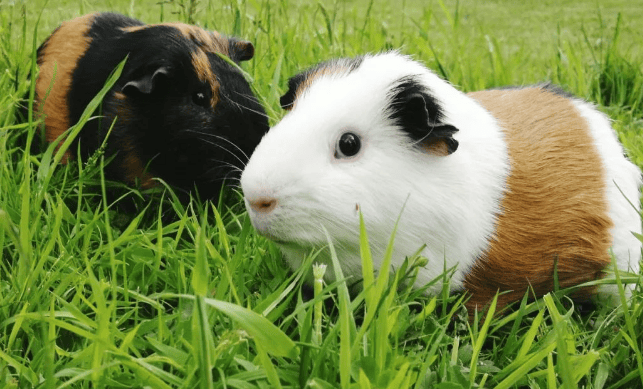Guinea pigs are rodents native to South America. They are closely related to chinchillas and porcupines. In South America, guinea pigs are often hunted or raised for meat. In the United States, guinea pigs are kept as pets and used in scientific research. Guinea pigs can be divided into three categories based on hair length: short-haired, long-haired and hairless.

Characteristics of Guinea Pigs as Pets
Guinea pigs are smart and quiet animals and make good pets. They are not aggressive and would rather run away from danger than bite. They are sensitive animals and can be frightened by sudden and loud noises. Because guinea pigs are social animals, they are best kept in pairs or three. If one is kept alone, it may get close to its owner, barking in greeting.
Guinea pigs can learn to get along with other household pets, such as cats, dogs, and rabbits, but should not be kept with animals that carry Bordetella bacteria, which can cause serious illness in the guinea pig.
When raised in groups, a hierarchy is established, with the male usually taking the dominant position. Overcrowding may trigger aggressive behavior, and there may be aggression between uncastrated males in a group with females. Introducing a new guinea pig should be done in a neutral area and under the supervision of the owner at all times. When the animal density is too high or under stress, guinea pigs cannot adapt well to changes in food or environment, and may chew their hair. Guinea pigs are most active during the dawn and dusk periods and like to rest or sleep during the day.
Physiological indicators
Life span 4–8 years (average 5 years in domesticated animals)
Adult body length 310mm
Adult weight
Male 900–1200g
Female 750–900g
Body temperature 37.2–39.5°C (rectal)
Respiration 42-104/min
Heart rate 230–380/min
Feeding environment requirements

A guinea pig can be Place in a cage no smaller than 30 x 60cm, the larger the space, the better. The sides should be at least 30cm high.
Because guinea pigs cannot jump or climb, they can be housed in an open-top cage.
Guinea pigs like to exercise outside their enclosures, but only under the supervision of their owners.
Like all rodents, guinea pigs explore the world by nibbling on new things. Therefore, the play area should be checked for any potential hazards.
The cage should provide a certain amount of sunlight and a room temperature range of 13–21°C.
Shading must be provided to prevent overheating, which may lead to heatstroke at temperatures above 27–29°C.
The interior of the cage should be well ventilated.
The floor should preferably be solid and covered with a large amount of dust-free bedding such as shredded paper, composite recycled paper material, hay or commercial granular bedding.
Guinea pigs will excrete more urine and feces. Their feces have relatively no unpleasant smell. Change the litter at least once a week to control the smell of urine and prevent respiratory and skin problems. disease. Guinea pigs are sensitive to ammonia in their urine.
Environmental enrichment
Enrichment items may include toilet paper rolls, untreated cardboard boxes, paper towel rolls, hay, straw, paper bags and toys designed for large birds and cats .
Nibbling items should be provided, such as apple branches.
Guinea pigs like a quiet environment, provide a box or tunnel for them to hide and rest.

 扫一扫微信交流
扫一扫微信交流
发布评论